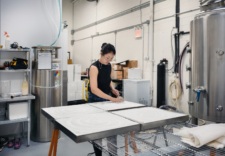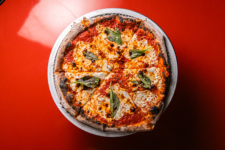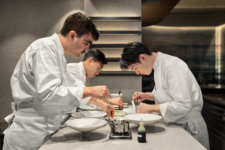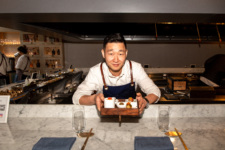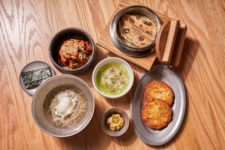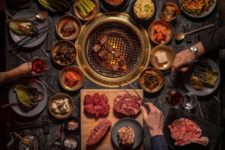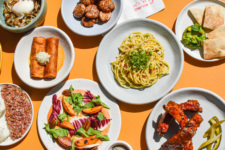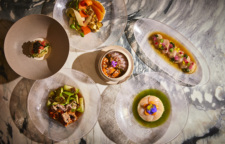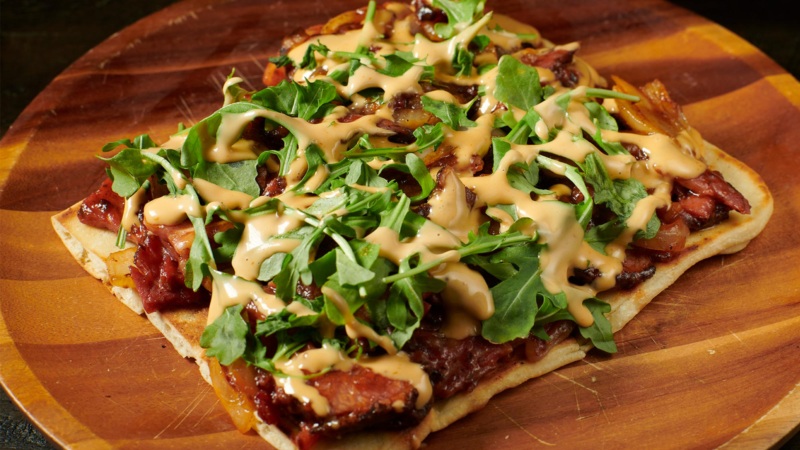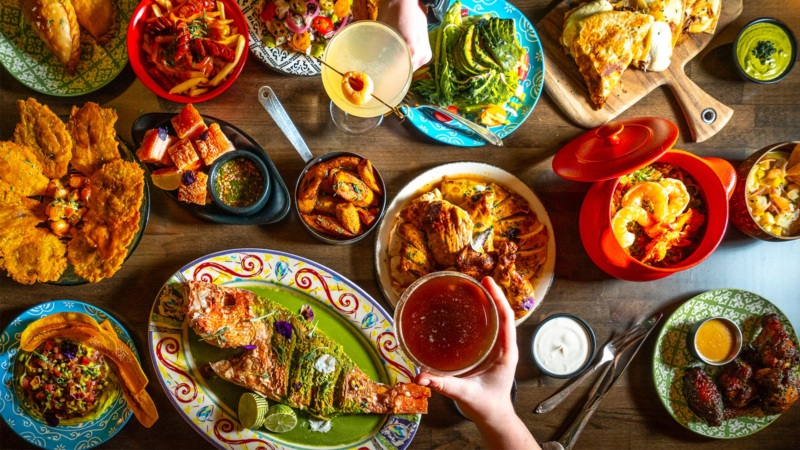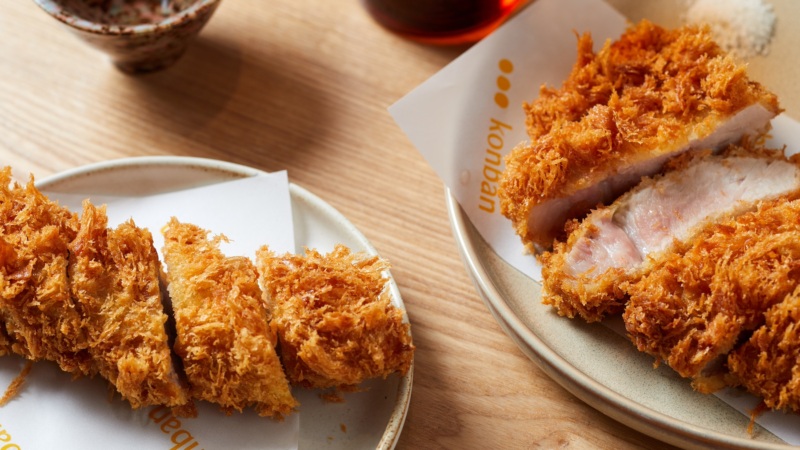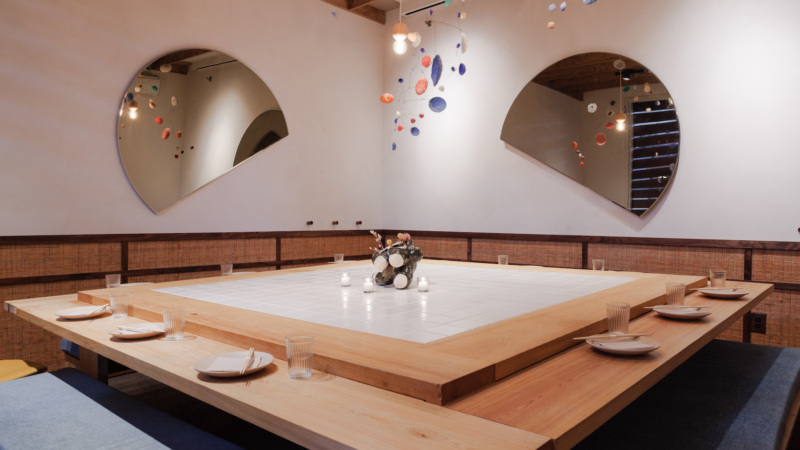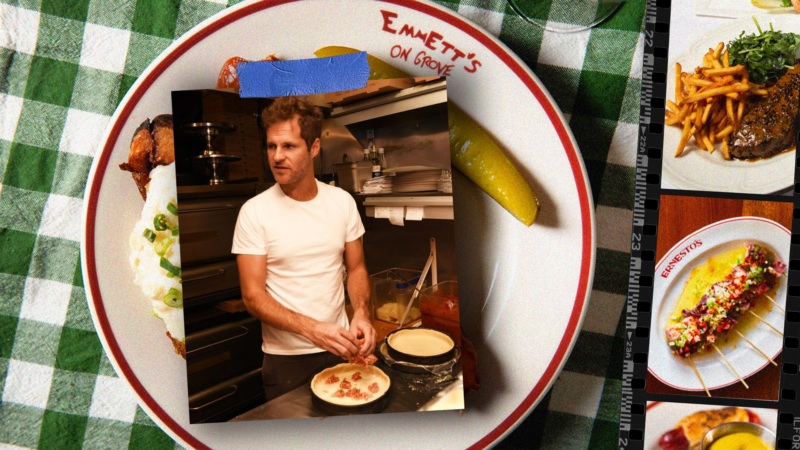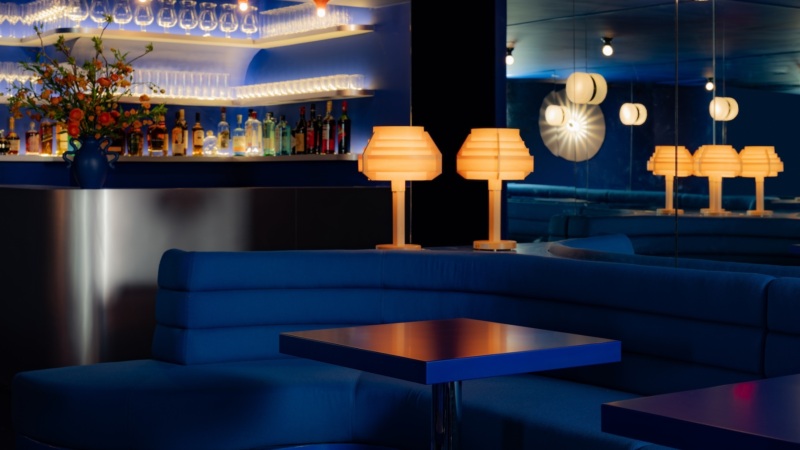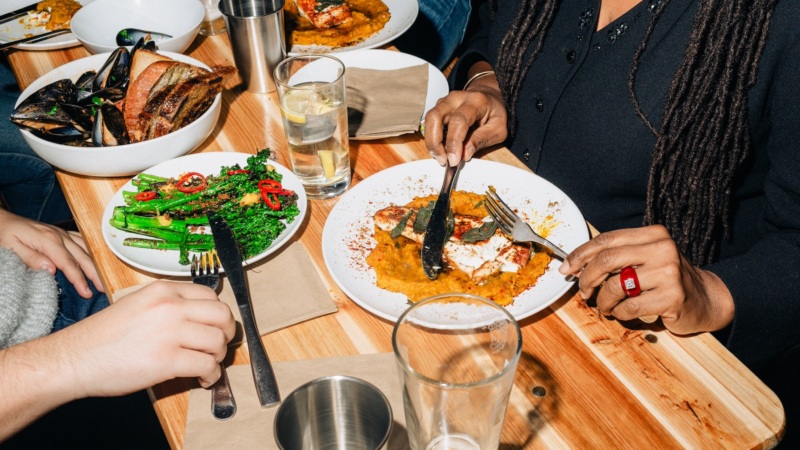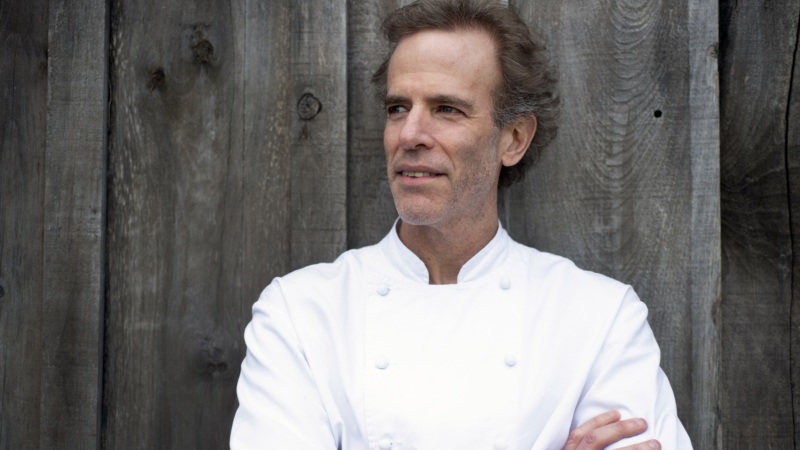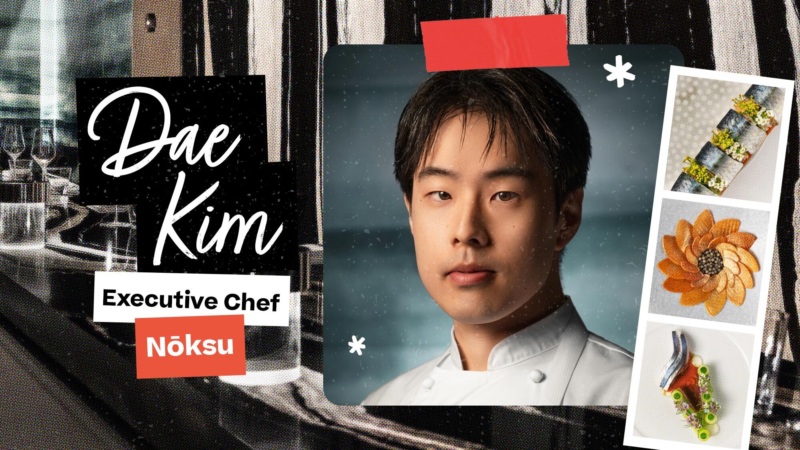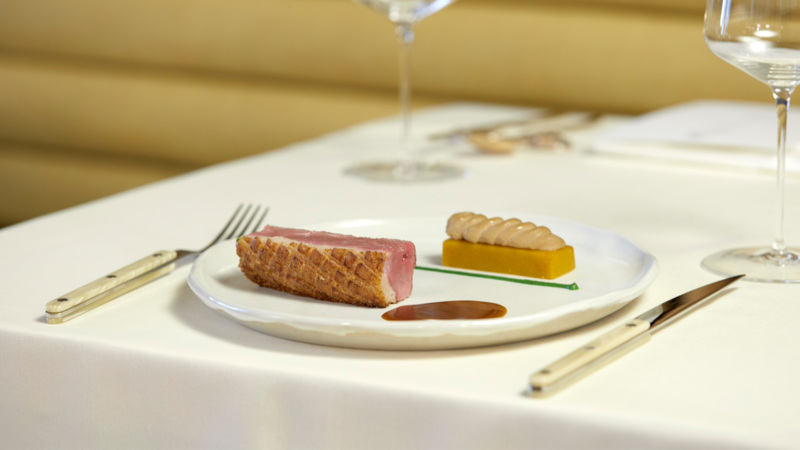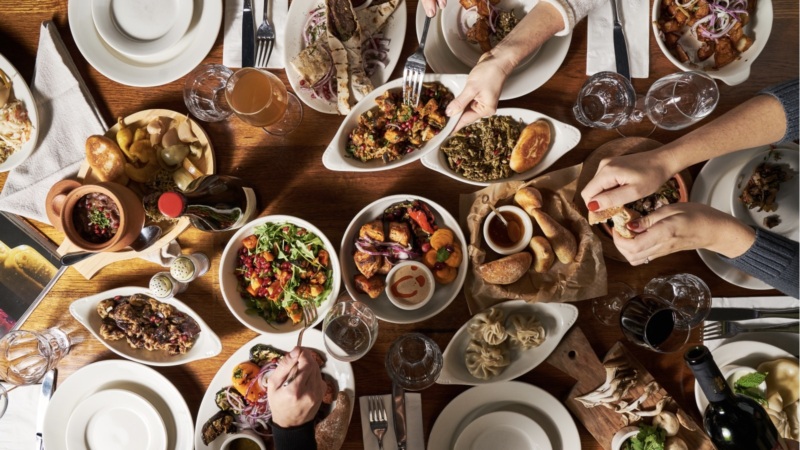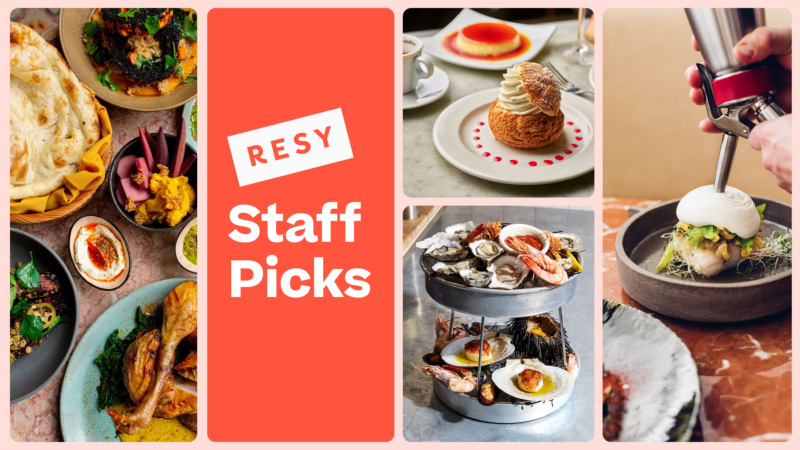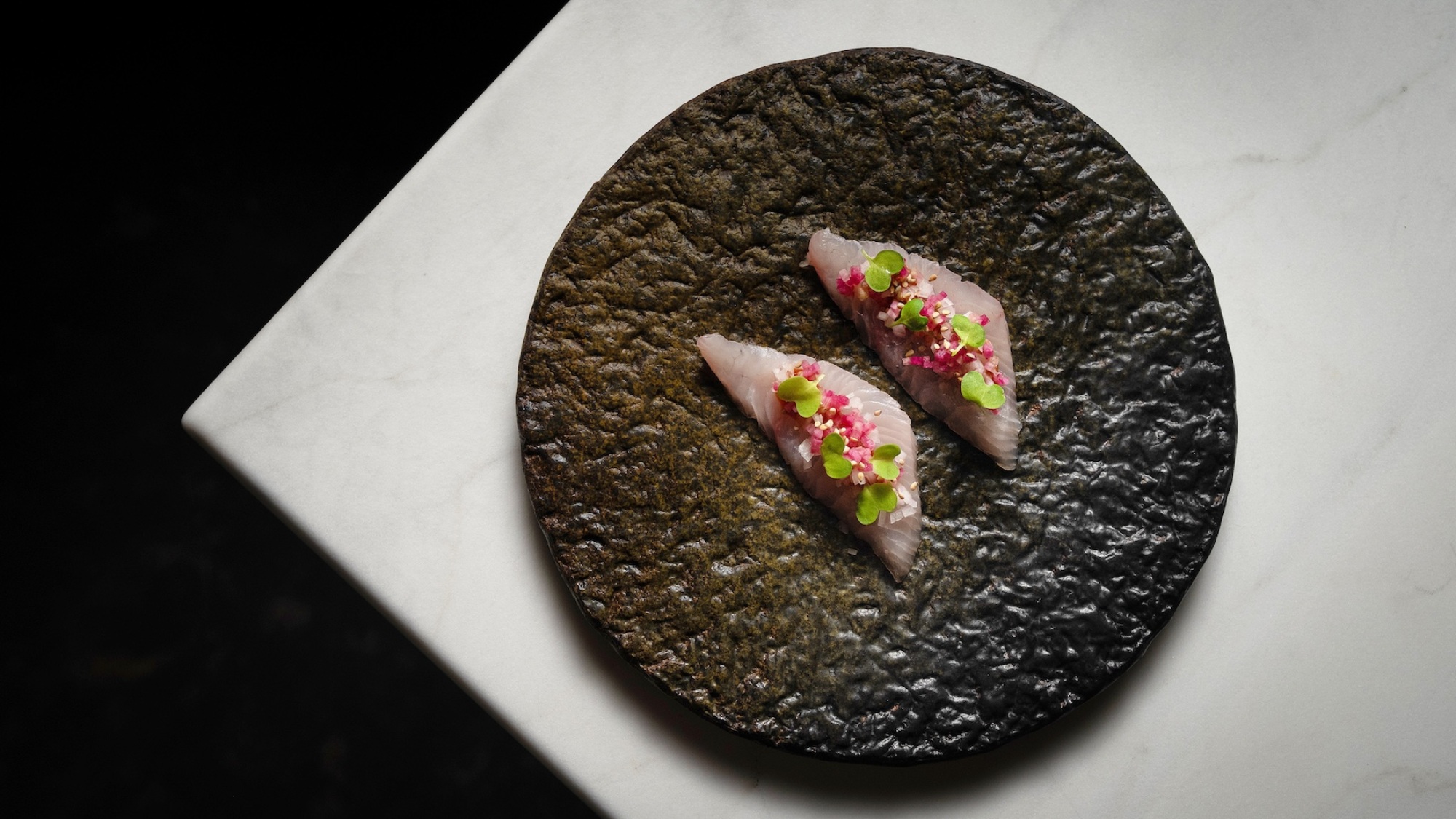
“Meju Isn’t Just About Delicious Food — It’s a Story”
In New York today, it’s impossible to understate the prevalence and impact of contemporary Korean cuisine. Restaurants like Atomix, Jua, Soogil, and Oiji Mi — each delicious and complex in their own right, melding the best of Korean traditions with other influences — have become dining destinations. Among them, though, is an outlier which opened in January 2023.
Located on a quiet residential street in Long Island City, Meju, from chef Hooni Kim, is a very different kind of establishment. Meju takes its name from the blocks of dried soybeans essential for kick-starting the wild fermentation of jangs, traditional Korean seasoning pastes. These jangs are the stars of Kim’s tasting menus, served four nights a week to those lucky enough to score one of the eight seats in his elegantly understated space tucked away in the back of his Little Banchan Shop.
In 2011, Kim, an alum of such kitchens as Masa and Daniel, made a name for himself by opening Danji, one of the first chef-driven Korean spots in the city, and the first Korean restaurant anywhere to receive a Michelin star. Meju, too, was awarded a Michelin star (the only one in Queens right now), but don’t expect any globally influenced luxury here. Instead of the uni and truffles, there are rarities like a 129-year-old soy sauce, or gochujang made by Kim’s fermentation mentor on a remote farm in Korea. The gochugaru [chile powder] for kimchi is made from the special chiles Kim grows himself. The fragrant housemade sesame oil? So labor-intensive it takes half-an-hour to produce just one cup.
“The reason I opened Meju,” Kim tells me as we compare the intensity of different jangs, “is that I felt like the real story of Korean cuisine was missing in New York. So many Korean fine-dining places are about the chef’s personality, or their interest in global cuisine. But what restaurant defines traditional Korean food in this city? It’s a gap I wanted to fill. Without this [reference point], the impact of new-wave Korean places is lessened somehow. If people don’t know what Korean food is, how can they understand how creative JP [Park, the chef and owner of Atomix and Atoboy] and all these other chefs are?”
Below are Kim’s thoughts on his fascinating career trajectory, fermentation, and the rise of Korean fine dining.
Resy: You left Korea when you were very young. What connected you to Korean food as a kid?
Hooni Kim: We left Korea when I was four for England, then moved to the U.S. when I was 10. We went to Korean restaurants as much as possible, but Korean food here was different from how it tasted back home. I knew this because we went back every summer to visit my paternal grandmother, as my dad passed away when I was two. She lived way out in the countryside on a remote island between Jeju and the peninsula. It took three to four days just to get there. My grandmother made her own jangs and grew vegetables in her backyard. The village shared a rice paddy where everyone gathered the rice every year. It was a place where the electricity would shut down at 9 p.m. at night, and there were just two telephones for the entire island! Like something out of the 1800’s.
Any food experiences from that time that spoke to you?
Yes! One I loved, the other I hated. I hated the doenjang [fermented soy bean paste]. Everywhere smelled of it. The whole village. Every house I entered. Only when I was in my thirties did I start to crave it and miss it.
What I loved was the gim [seaweed]. My grandma’s island was famous for gim. It was the most delicious thing ever. Roasted and eaten plain. That’s how we now serve it at Meju. So much gim these days is covered up with oil, sugar, or MSG. You forget what good seaweed really tastes like. I tell our diners to try it on its own, without even rice, to appreciate the natural flavors.
You almost graduated from medical school. Why did you decide to become a chef instead?
I hated hospitals, though I didn’t realize it until I started doing my rounds in my third year of med school. So, I wanted to do something different. Growing up in New York, I was privileged to try every cuisine imaginable at friends’ homes, and not just at restaurants. I was a latchkey kid. My mom was a fashion designer and always busy, so friends would invite me. Eventually, I ended up at The French Culinary Institute. Then I worked at Daniel, where most of the chefs were from France and the language of the kitchen was French.
So what made you want to become a Korean chef?
I was jealous of the passion of the French cooks at Daniel. They were so excited and proud of their cuisine, like Olympic athletes representing their country. I was very good in the kitchen, but I couldn’t share the passion of cooking as a national cultural achievement. Korea at the time didn’t have anything like it. It was embarrassing to be a chef in Korea, or an entertainer even. For Koreans, education was a way into the upper class. It was almost a caste system. And the way to move up was to study hard and become a lawyer or a doctor or a scholar.
The context for becoming a proud Korean chef then didn’t really exist yet?
Exactly. So instead I turned to Japanese food and went to work at Masa, New York’s best Japanese restaurant. Luckily, Masa really loved Korean food. And he told me something really important: “When you open your future restaurant, look in the mirror and cook who you are!” So I looked in the mirror, growing up American and all, and I still saw a Korean person. But I wasn’t a very good Korean cook yet. I knew how to make things delicious, but not so much about the history and methods of traditional Korean cooking. Danji was never a traditional restaurant. It was fusion, and it was right for my Korean American self at the time. But after I opened it, I would return to Korea knowing how little I really knew, wanting to be a student again.


You were a trailblazer though: The first ever Korean Michelin star, the first creative Korean spot in New York. By the time Meju opened, Korean culture and cuisine have exploded. Why do you think that is? K-Pop?
It was a combination of things. One was technology that shot up in Korea: Samsung phones and TVs, and Hyundai cars that went from crappy to cool. When I was in grade school, nobody knew where Korea even was. But tech helped its image, helped make it rich. The comfort levels of Koreans went up. Fashion came. You didn’t need to become a doctor or lawyer if you were already rich. It was OK for parents to let kids be musicians or movie directors or chefs.
And the rise of New York’s Korean fine dining?
Fine dining didn’t really exist in Korea until pretty recently. Restaurants there were never about the chef. That only changed when Korean food became globalized. Now, Korean cooks are succeeding here because they are good. It’s the discipline. A lot are men: Men in Korea have to go through the army where they develop focus and discipline, which is what a fine kitchen needs. Plus, Koreans have a knack for seasoning! Kids grow up seasoning their own food, mixing the different spicy banchans with the bland rice. Since childhood, you’re always mixing and flavoring.
As Korean food was ascending, what happened in your own trajectory? How did you deepen your knowledge? Tell us about meeting your current fermentation mentor.
It’s an incredible story! Fourteen years ago, when Danji first opened, a regular there, an NYU student, brought me a jar of Korean soy pickles. It was the best pickle I had in my life. I wanted to find out who made it, but then Danji got a Michelin star and life got too busy. But the pickle jar sat in my fridge, reminding me how much I still had to learn about Korean cuisine. Fast forward six years: The NYU student gets married in Korea and I happen to be at her wedding. I sit next to this nice older couple. They’re farmers, and they invite me to their farm. I go and have the most incredible Korean meal of my life. I’m floored by the flavors. They give me all these jars of food to take home. As I put the jars in my fridge in New York, from the corner of my eye I see the six-year-old pickle … and I realize that it has the same exact handwriting on it! Both were made by those farmers — my future fermentation mentor and his wife.
He is a Korean medicine man, a profession that disappeared during the Japanese occupation [1910-1945]. He uses food and fermentation to heal. He’s an organic farmer, a fermenter who grows his own medicine. He’s not a chef; what he teaches me is intellectual. Korean food is always health first, flavor second. You always think of nutrition instead of chasing pure flavor like restaurant chefs are trained to do. You have this higher ideal. I learned this from this mentor, and I fully believe in it now.
For that story, the menu needs a certain progression, with different important chapters. The chapters tell of the different ferments that create a picture of Korean cuisine.
So what led you to Meju, which shares a space with your Little Banchan Shop? And why open in Queens?
I live across the street from Little Banchan Shop, in Long Island City. And what better place to do traditional Korean food than Queens, a borough that’s always had so many Koreans? Little Banchan was meant as a neighborhood place; every neighborhood in Korea has one. Banchan is what you make for your neighbors. The word banchan, by the way, has two meanings: At a restaurant it means all the side dishes; at home, it’s basically everything except the rice. When kids come from school, the phrase “What’s for dinner” in Korean is “What’s the banchan today?”
So how did Meju evolve from Little Banchan Shop?
LIC buildings have backyards, and the owner of ours pushed the building into the backyard space. Our designer said “Look, we have all this extra space.” I’d never fermented thinking I’d use it for restaurants; I did it for my own health. But I had enough jangs for myself. So, I decided to share, since the space was already here!
Tell us about the menu.
I do all the shopping myself at the farmers market, which tells me what the day’s menu will be. But the star of the menu is fermentation. The first word of every dish at Meju is the name of a different jang. The other ingredients are named second.
Take our doenjang and tofu dish, for instance. We make our own tofu right before service and pour the doenjang soup over it. I make our doenjang in Korea. You can’t ferment it here; the bacteria in the air is different, plus Korean soy beans have been grown for a thousand years. Every Korean household makes doenjang differently. And your own microbiome will dictate how it tastes to you.
For the gochujang dish [served with hwe, or raw fish] I use my mentor’s gochujang. Even in Korea they stopped doing it like he does, with actual meju. It’s very complex. So much flavor.
Next, I might serve jeons [Korean fritters] with ganjang [soy sauce]. The soy sauce we use here is 129 years old! To follow I might feature jeotgal [fermented seafood] that’s so essential as well. And of course the menu has kimchi, which is its entire own technique.
Was it a gamble to have a whole tasting menu based on jangs?
Ha! A Korean fine-dining spot that doesn’t have truffles or caviar? Of course it was different from your Atomix model. But we’ve been completely booked since we started. Some days we have a 600-people waitlist for eight seats!
And because we’re in Queens, we didn’t need to fall into the caviar-truffle trap. The fact of being right here gave us the courage to do things more traditionally.


But aren’t you returning to your fine-dining roots in a way with the tasting menu format?
As I say, Meju isn’t just about delicious food. It’s a story: one about Korean flavors and jangs and their history. For that story, the menu needs a certain progression, with different important chapters. The chapters tell of the different ferments that create a picture of Korean cuisine. The order is important. The three main jangs have to be in the beginning, for instance. Kind of like French mother sauces.
Let’s talk about the concept of “national dishes” since jang is, in many ways, considered a national dish of Korea.
A national technique, rather. As a national dish, I’d say kimchi because it’s so versatile: you have it with breakfast, lunch, dinner, on everything. But ask Koreans what’s their “mom dish” and they might say doenjang jjigae [soybean ferment stew]. The two dishes touch people differently — both are important.
What are your thoughts on contemporary Korean cuisine in New York these days, especially since so many people credit you for launching this current wave when you first opened Danji?
Danji was fusion, not traditional Korean. But we become chefs because it allows us to be creative and share who we are or who we want to be. I think the reason globalized Korean food is taking over here is because all of these fine dining chefs are usually Korean Korean, not Korean American. Their generation grew up in Korea with globalized food. Korean fine dining there is way more fusiony than it is in New York, because locals don’t necessarily want to pay for their mom’s food at restaurants. Once I asked Jungsik [Yim, chef and owner of Jungsik restaurant]: “Why don’t you cook more Korean?” And he replied: “I don’t want to be the second-best cook in my family!”
Where is Korean cuisine going generally in the U.S.? Is it the next Italian American cuisine? We see glimpses of it now, especially with Korean fried chicken, or the prevalence of gochujang in so many dishes.
Korean food is not like Italian [food]. Ultimately, to cook great Korean [food], you need good ferments and they’re hard to get in this country. Even in Korea they’re expensive, unless they are made by your grandma or aunt. These ferments flavor all the foods that we cook. They require technique and time: a good jang takes at least nine months.
That said, Korean cuisine is definitely more than a passing trend. Once you love a cuisine, it gets stuck in your brain, you want to have it again. And Korean food is in the early stages of that. Young Korean food writers and chefs have so much energy, which even I don’t have. I’m just happy to be serving eight diners a night and telling impactful stories to a few people.
I just like to think that I’ve helped in my small way.
Meju is open for dinner Wednesdays through Saturdays.
Editor’s Note: Kim’s first restaurant, Danji, remains closed due to complications from a fire next door and in an effort to reopen, he’s currently raising funds on GoFundMe.
Anya von Bremzen is a James Beard Award-winning book author and journalist based in Jackson Heights, N.Y. Her latest book, “National Dish,” was published last year. Follow her on Instagram. Follow Resy, too.








